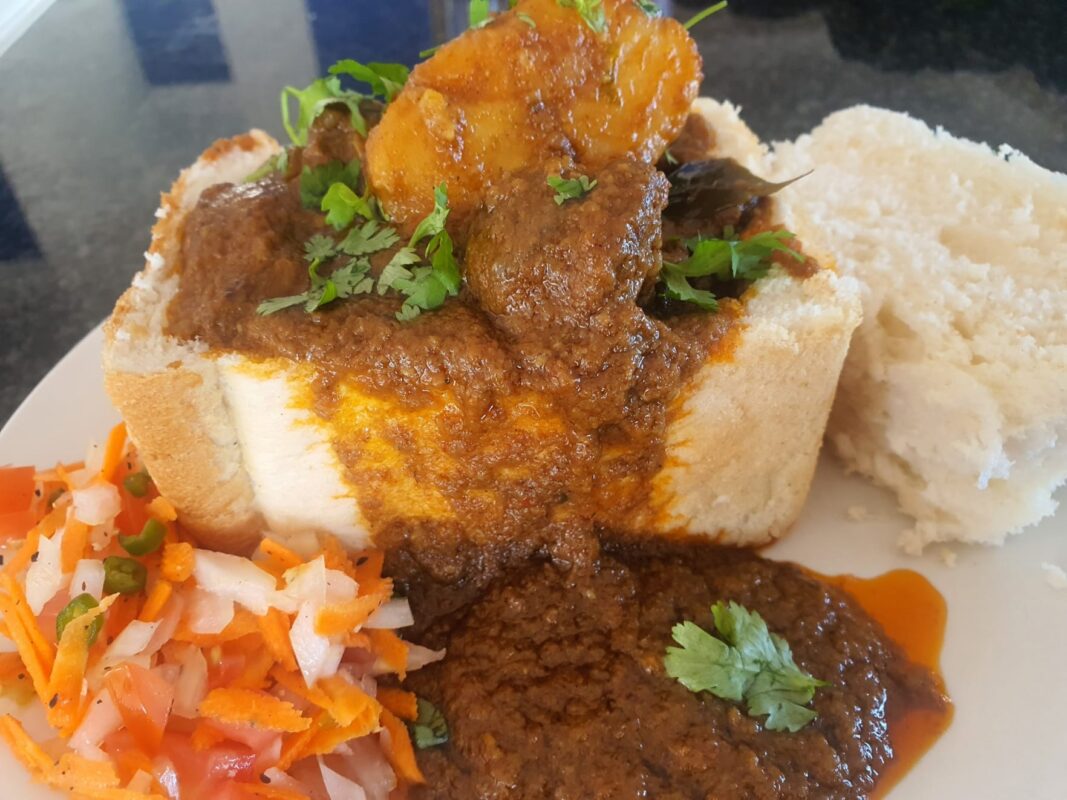
It is Friday night and that can only mean one thing …. bunny chows.
I had just over a kg of mutton, the last of a whole leg that I asked the butcher to cut into cutlets for me. I then divide it up into 4 portions and hand cut it into curry pieces when I cook; one portion for each Friday Curry Night of the month. It seldom lasts more than 10 days, though.
When cooking a curry for bunny chow’s, one needs to make extra gravy as the bread soaks up a lot of the gravy, this means even doubling up on the amount of onions and tomatoes used.
I thought to myself, I wonder if I can use my food processor to chop the onions?
Hmm, I wonder if I can use the food processor to prepare all the ingredients?
I guess there is only one way to find out.
I won’t waste your time with a long , drawn out story. I will cut straight to the chase and tell you that it was an overwhelming success and until I find a better way, this is now my new go-to method.
Time to cook.
I took two large onions, cut them into quarters and bombed them into the Kenwood. Why stop there, so I also added the fresh garlic, fresh ginger, two red fresh chillies, 2 dried chillies and some curry leaves. I drizzled a bit of oil over the ingredients, dunno why, I guess to try and stop the ingredients from sticking to the side of the bowl.
30 seconds later, the ingredients were finely chopped and my kitchen was filled with the most incredible aromas. I think that I can get used to this.
I was wondering how far to take the chopping. Many people grate their onions and swear that it is the secret to perfect gravy, so I knew that even if the ingredients ended up a puree, it would not be the end of the world. I, however, stopped when the mixture was still a little course – almost like the texture of the chopped garlic that you buy from the supermarket.
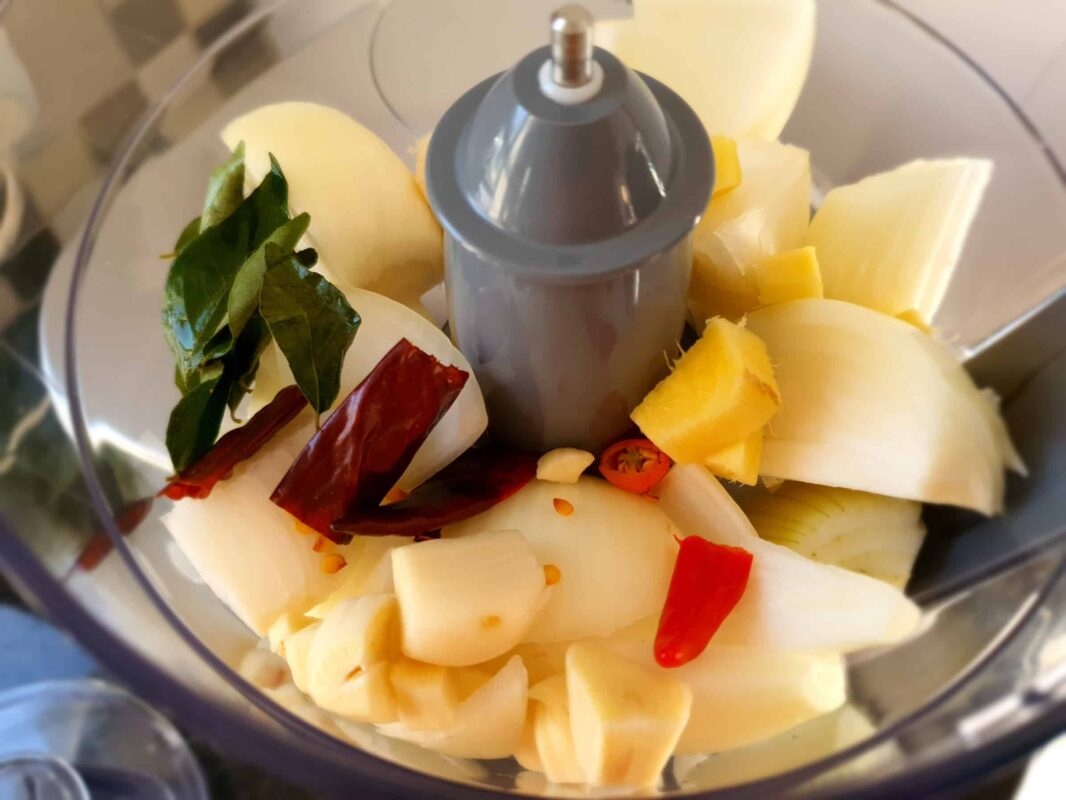
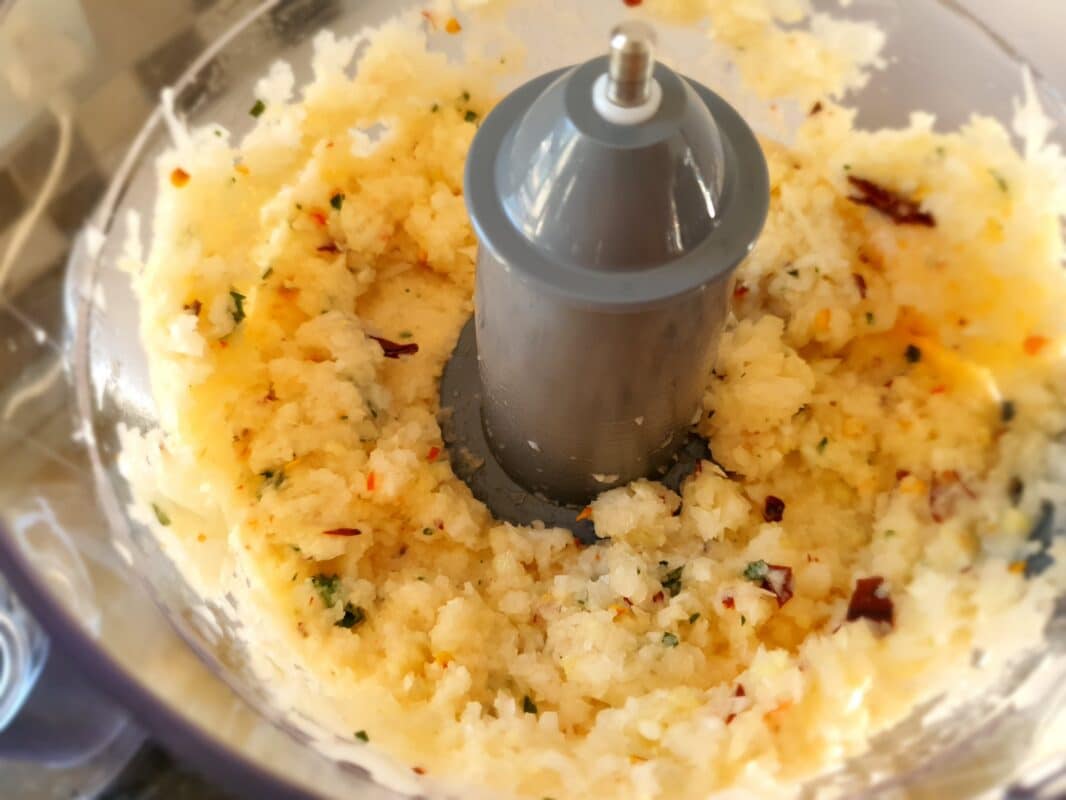
I put my favourite AMC Pot onto a medium flame and added some sunflower oil and a teaspoon of ghee. When it started to sizzle, I added the onion mixture and let it sauté until the onions were soft and caramelised.
As my intentions were to make a nice hot curry, I added a teaspoon of Kashmiri Chilli Powder to the onions and mixed it all up. Although the All-in-One Masala is Kashmiri based, I sometimes like to add a little more to add some extra heat. The Kashmiri Chilli gives the curry a beautiful red colour.
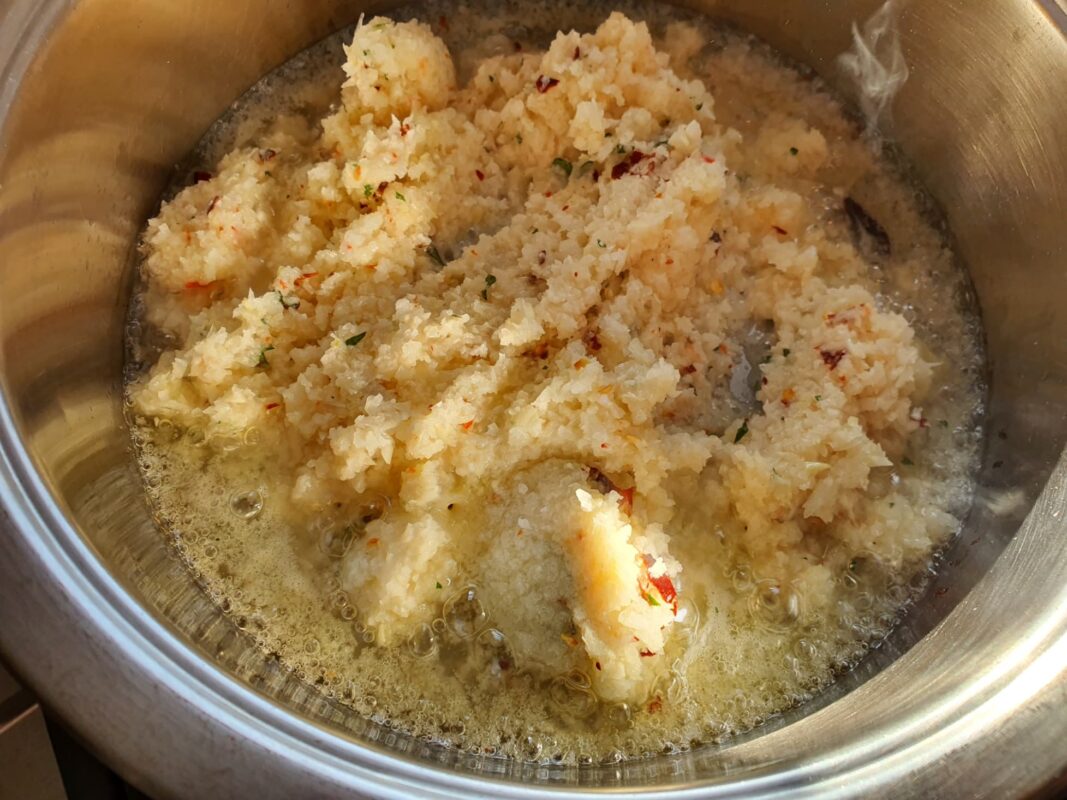
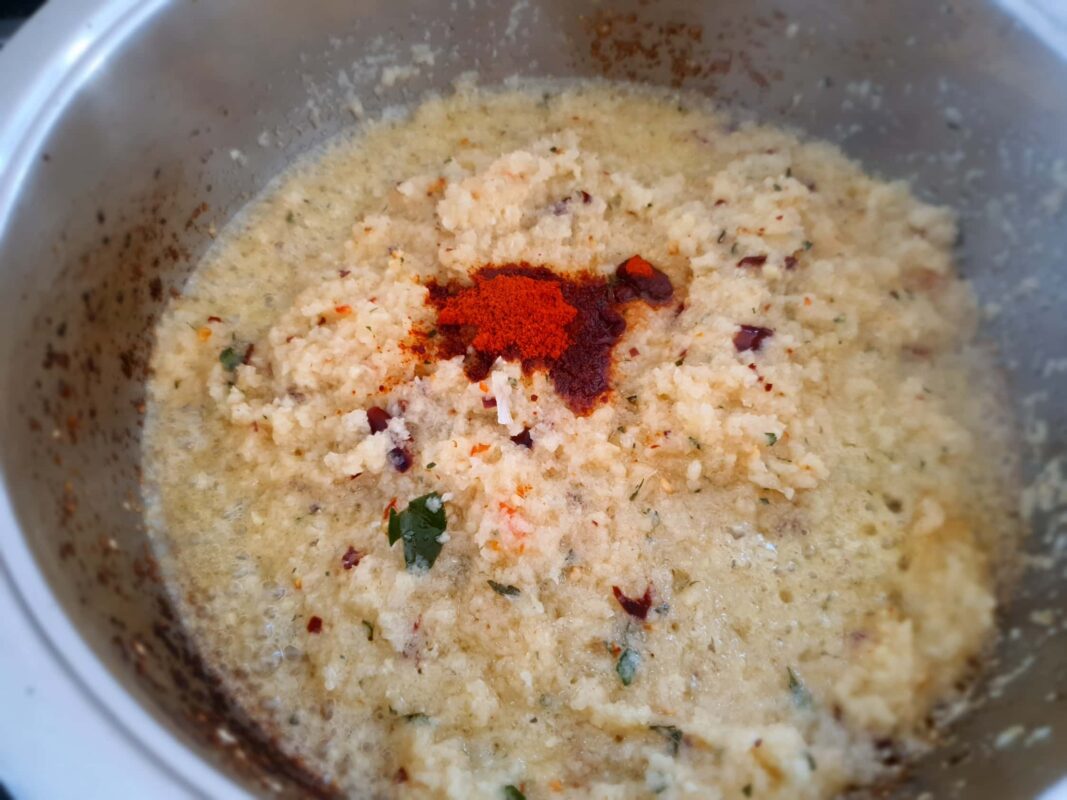
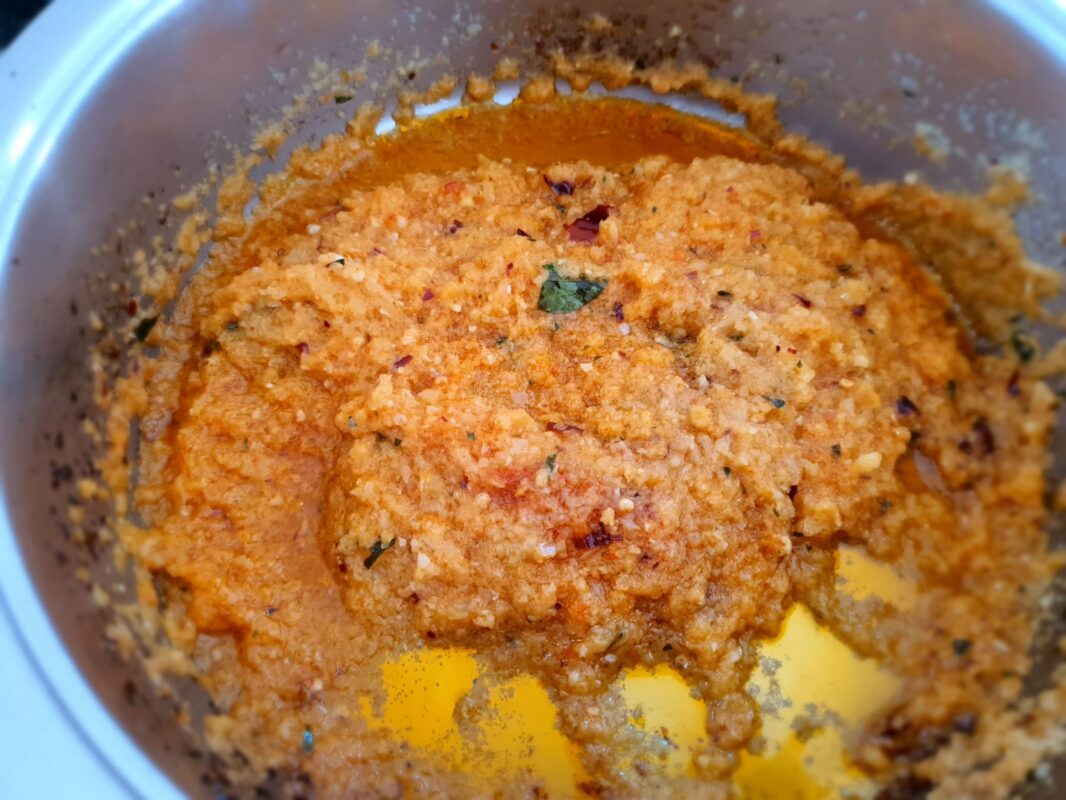
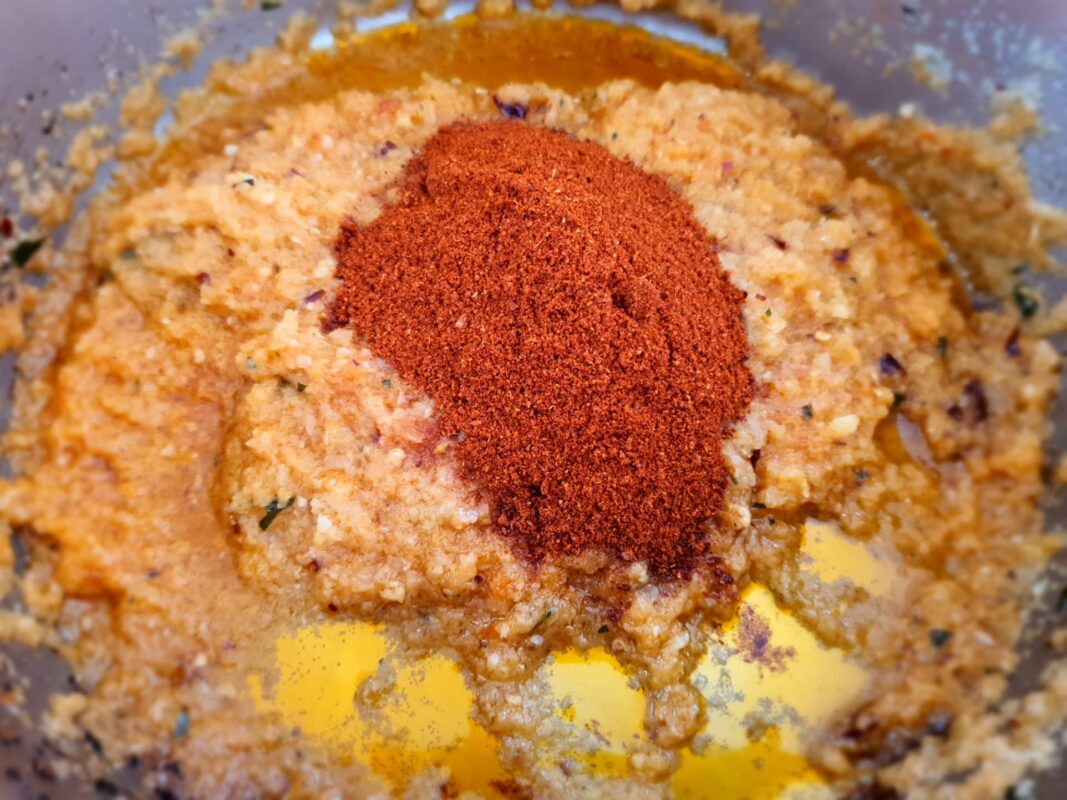
Once the masala had nicely tempered, I added the mutton and mixed it in until all the meat was coated in the onion/masala mixture.
More and more, I have been adding a little bit of water when the masala is tempering. As soon as the pot starts to go dry, I add a splash of water. I find it helps the masala to really break down and incorporate into the onions. The colour changes and the dish just seems to come alive. Add your meat after this bit of water has cooked off.
Once your meat has been well coated, turn the heat up a little and allow your meat to fry in the mixture, while taking care not to burn your masala on the bottom of the pot. Whenever necessary, just add a bit of hot water to your pot and give it a good mix.
I use a wooden spatula to cook. It is perfect for scraping the bottom of the pot.
I also like to braise the meat, at this point. So I put the lid on and let it simmer for 5 minutes or so and then open up, give it a good stir and then put the lid back on.
As mutton needs to cook a bit longer than lamb, I usually do 4 or even 5 sessions of five minute braising between stirs. Adjust your temperature so that your pot does not go dry.
The AMC Pot is perfect for this, as the pot is designed to reticulate the steam.
Once the mutton is starting to go soft, add the tomatoes.
I blitzed 3 large Jam tomatoes in the food processor. As I added the onions, I made a mental note to add some salt to the onions when I am blitzing them. Salt and tomatoes are good friends.
Mix the tomatoes in nicely, add some salt and cover. I do not normally add water at this stage yet, but if your mixture is a bit dry or there is any chance that it will stick on the bottom of the pot, add some water.
You can also add some extra curry leaves. I normally add the curry leaves in three stages. A few with the onions, a few with the meat and then a few just after the tomatoes.
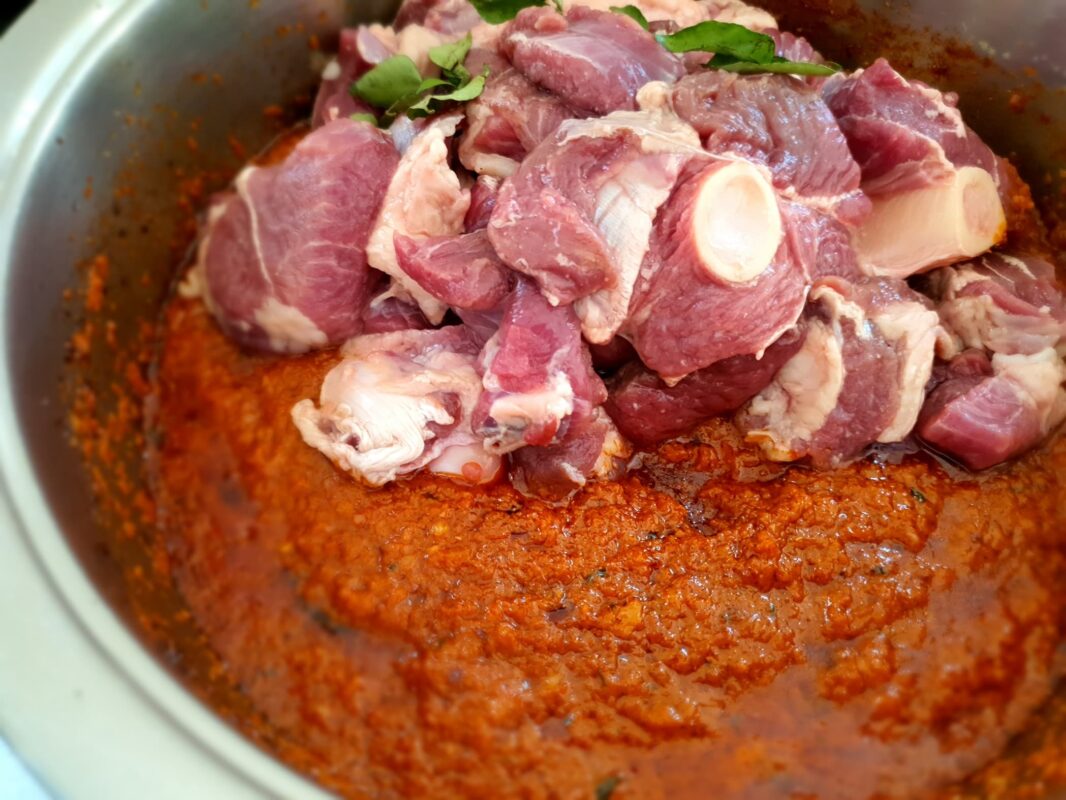
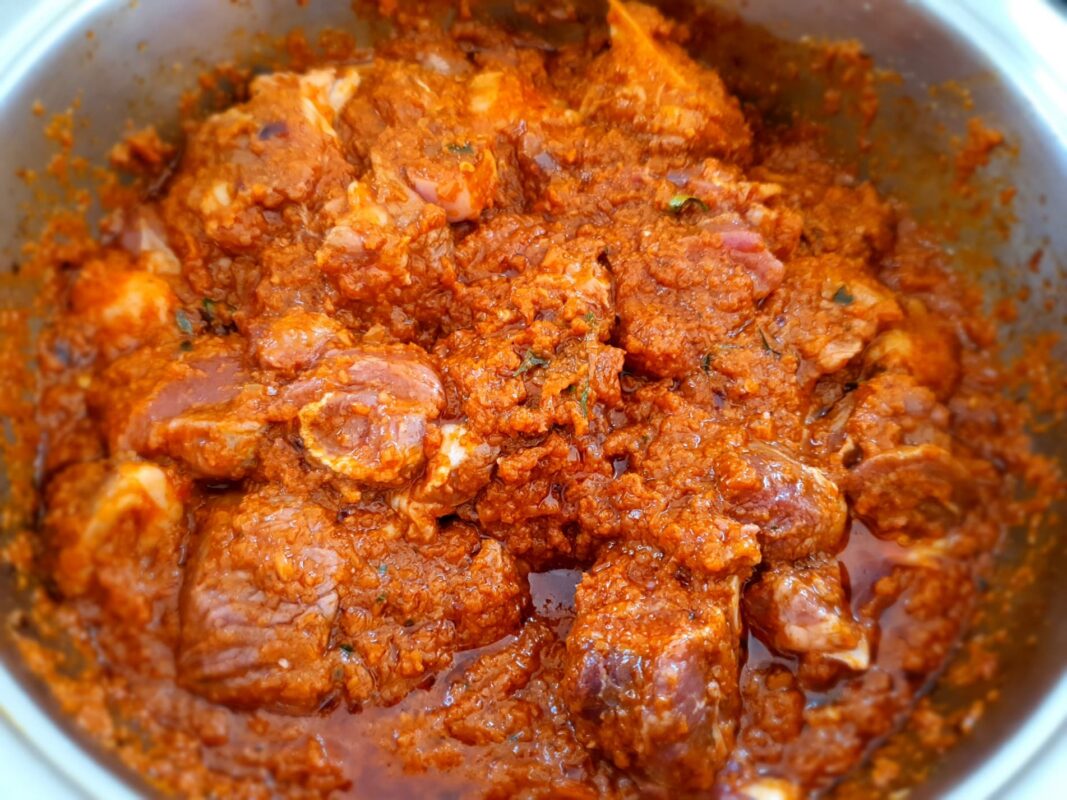
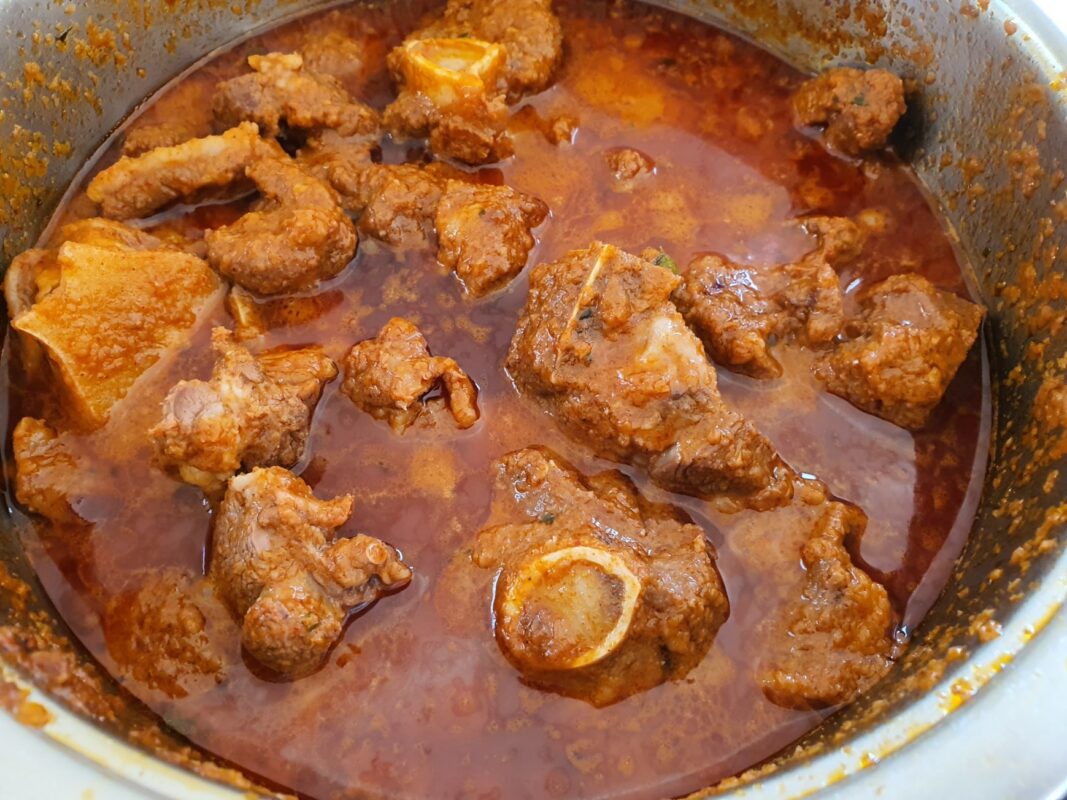
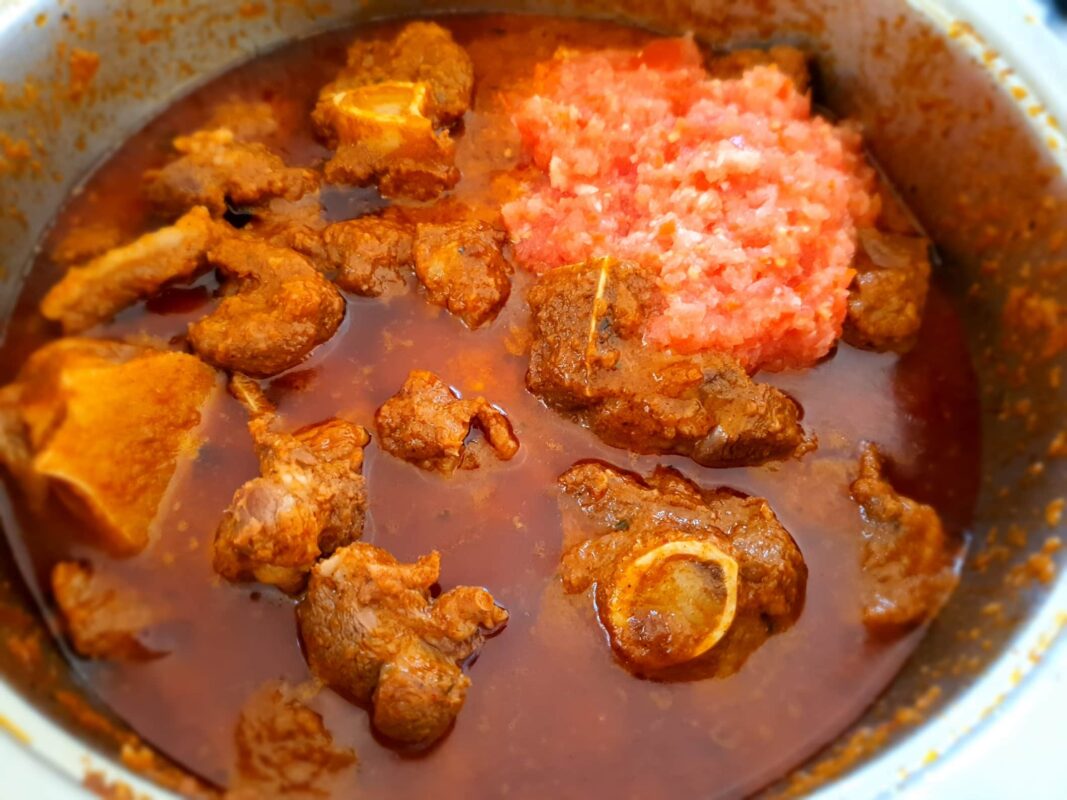
Once the tomatoes have cooked down into the gravy, the mutton should be well on the way to getting soft.
If you are confident that the mutton needs another 20 minutes until cooked, then add the potatoes and, if needed, some boiling water.
I cut the potatoes into halves and either prick with a fork or cut crosses with a knife so that the potatoes absorb the gravy. I also add a few drops of egg yellow food colouring in with the potatoes and let them stand until they are ready to be added.
If you are not a fan of using food colouring, there are other ways and means, as discussed in this article.
Once you have added your potatoes, check salt again and add some more if necessary.
Potatoes absorb a lot of salt, so it is generally a given that you will need to add some more salt after the potatoes. Potatoes can even save a meal if you have added too much salt, as discussed in this article on reducing excess salt in a curry.
The potatoes should take about 20 minutes to go soft. I like to give them an extra prick with a fork or knife while they are cooking. There is nothing better than a potato that has soaked in the gravy.
About 5 minutes before the end, you can remove the pot lid as to cook off any excess water.
Take care not to break up the potatoes when you stir.
Once cooked, garnish with fresh dhania and serve it with your favourite accompaniments.
For me, there is nothing better than a bunny chow.
In retrospect, I think I used a little bit too much oil. Remember though, just because there is oil, it does not mean that you have to dish all the oil.
My food processor is my new best friend. Love it.
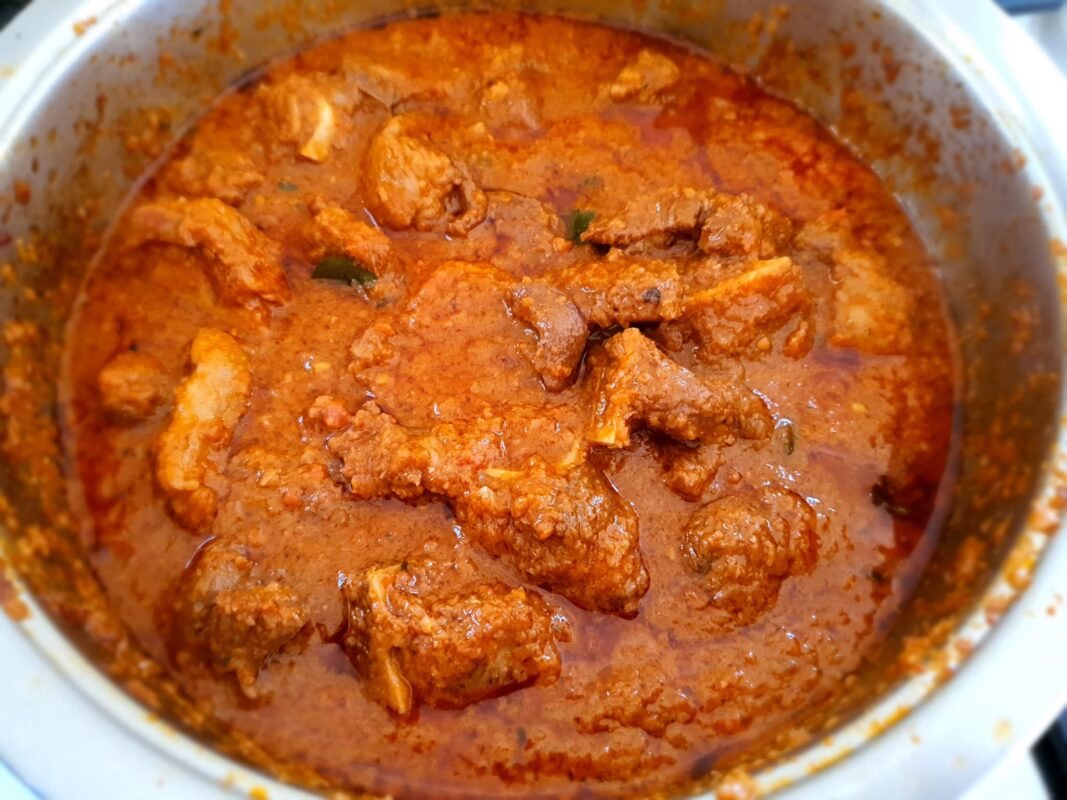
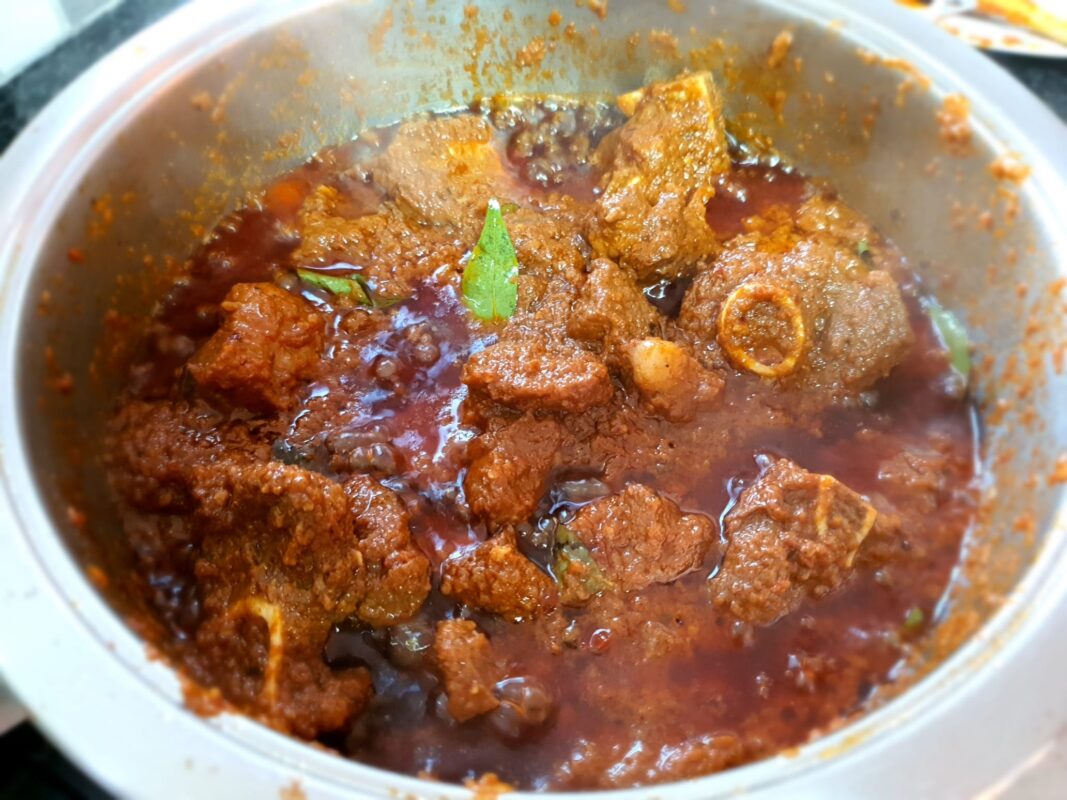
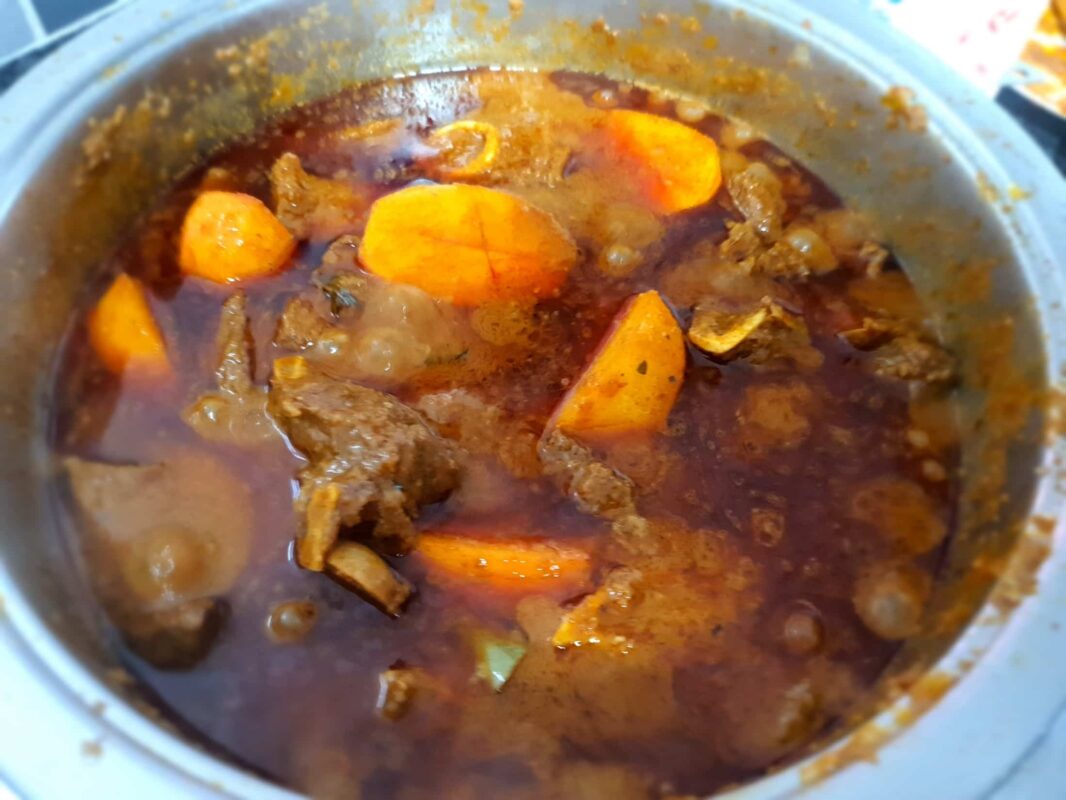
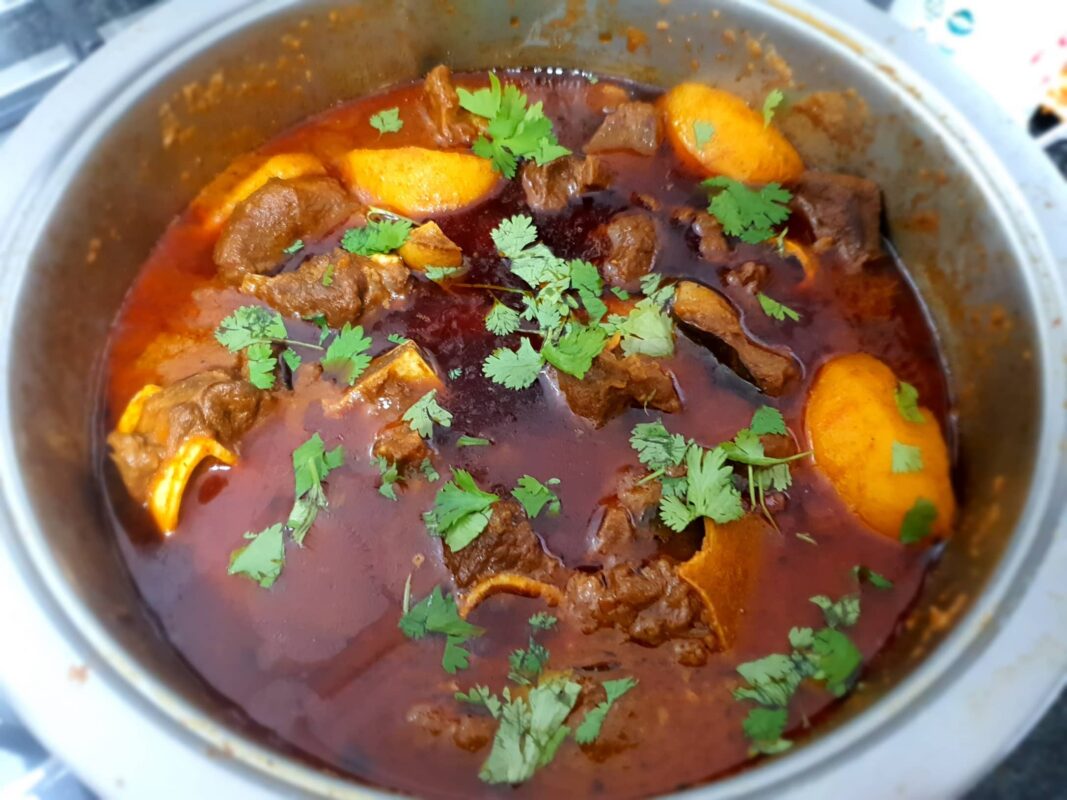
If you would like to try our Durban Curry Lovers, All-in-One Masala, you can purchase from our online store www.currylovers.co.za
We deliver nationwide and internationally. If your country is not on the list, then pls contact me and I will arrange the delivery.
